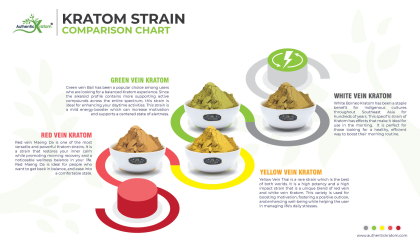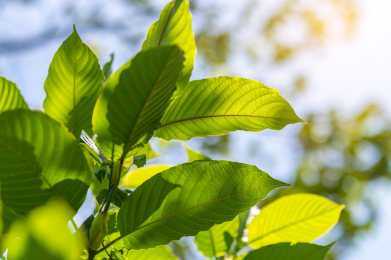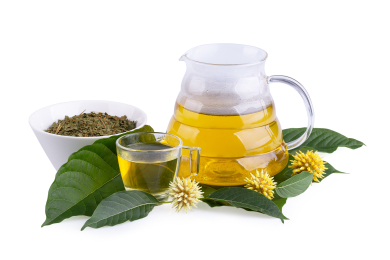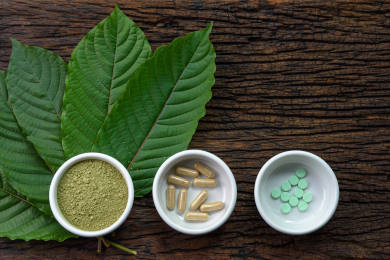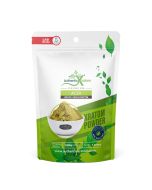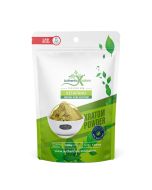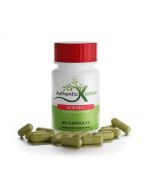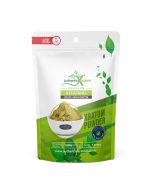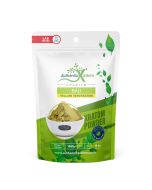- Buy any two kratom products, get 3rd one FREE
- There's No Minimum for Free Standard Shipping at Authentic Kratom
- Same Day Shipping. Order before 2:00 PM Pacific Time (M-F)
- Free Priority Mail Shipping on Orders $75 or more
- FREE 2 Day Shipping on orders $200 or more
- Buy Fresh & Potent Kratom Tea
Does Kratom Have Caffeine?
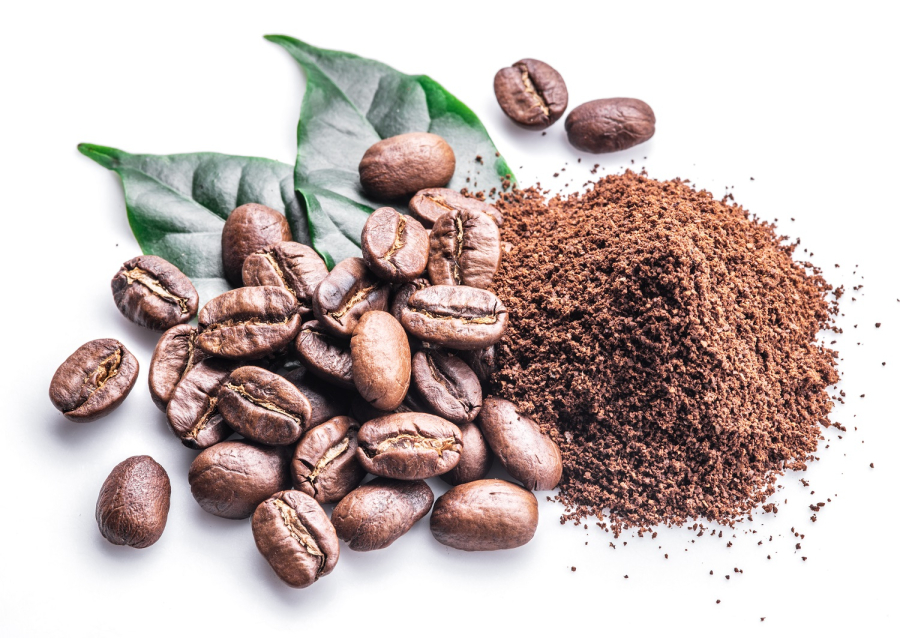
Why trust Authentic Kratom
- 10 years of experience in the kratom industry
- High expertise confirmed by a partnership with the American Kratom Association
- Only lab-tested and GMP-qualified products
- Reviewed and Trusted by thousands of customers
Kratom has garnered increasing attention in recent years for its potential medicinal properties. With its traditional use ranging from stimulant effects at low doses to sedative effects at higher doses, kratom has emerged as an alternative remedy for managing various conditions, including pain, anxiety, depression, and opioid withdrawal symptoms.
However, amidst the growing interest in kratom, questions have arisen regarding its relationship with caffeine, particularly as both kratom and coffee belong to the same family of plants.
But does kratom contain caffeine? In this article, we will unravel the mysteries of kratom, coffee, and their intriguing relationship, providing insights into their consumption effects. We will also explain why kratom users pick kratom coffee as their preferred drink and what considerations to bear in mind for a responsible and enjoyable kratom coffee experience.
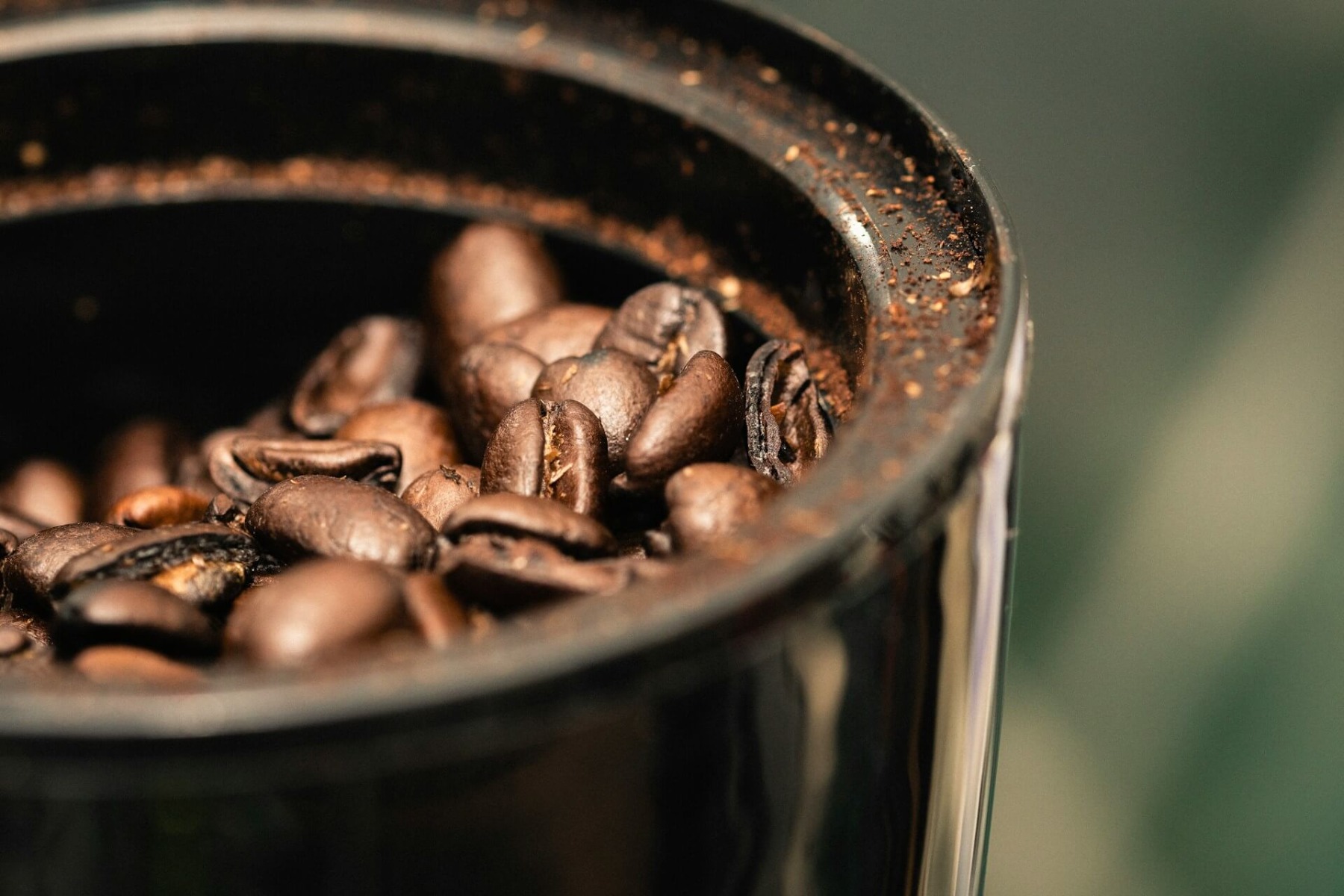
What Is Kratom?
Kratom is a tropical tree, scientifically known as Mitragyna speciosa, native to Southeast Asia, particularly Thailand, Malaysia, Indonesia, and Papua New Guinea. Based on the region they are found in, you can come across such kratom types as Malay, Sumatra, or Borneo kratom.
The leaves of the kratom tree contain compounds that have psychotropic (mind-altering) effects. Kratom has been traditionally used for its stimulant effects at low doses and sedative effects at higher doses in the regions where it grows.
In recent years, kratom has gained popularity as an alternative medicine for managing pain, anxiety, depression, and opioid withdrawal symptoms. It is often consumed by chewing the leaves, brewing them into tea, or in powdered form mixed with liquids or foods. Some people also use kratom extracts or capsules.
The primary active compounds in kratom are mitragynine and 7-hydroxymitragynine, which interact with opioid receptors in the brain, producing effects similar to opioids but with less potential for respiratory depression, which is a leading cause of overdose deaths associated with opioid drugs.
Types of Kratom Strains
Kratom strains are typically classified based on the region they come from, their different vein colors, and the drying and processing methods used. Some of the common types of kratom strains include:
- Red Vein Kratom: Known for its calming and sedative effects, red vein kratom is often used for relaxation and pain relief. It's a popular choice for evening use.
- Green Vein Kratom: Green vein kratom strains are considered to have a balance of both sedating and stimulating effects. They are often used for enhancing focus, mood, and energy levels.
- White Vein Kratom: White kratom strains are known for their energizing and stimulating properties. The white strain variety of kratom is often used to boost energy, enhance mood, and promote productivity.
- Maeng Da: Maeng Da is a potent strain of kratom known for its strong effects. It's available in red, green, and white vein varieties and is often used for its energizing and pain-relieving properties.
The Botanical Family of Kratom And Coffee - Rubiaceae
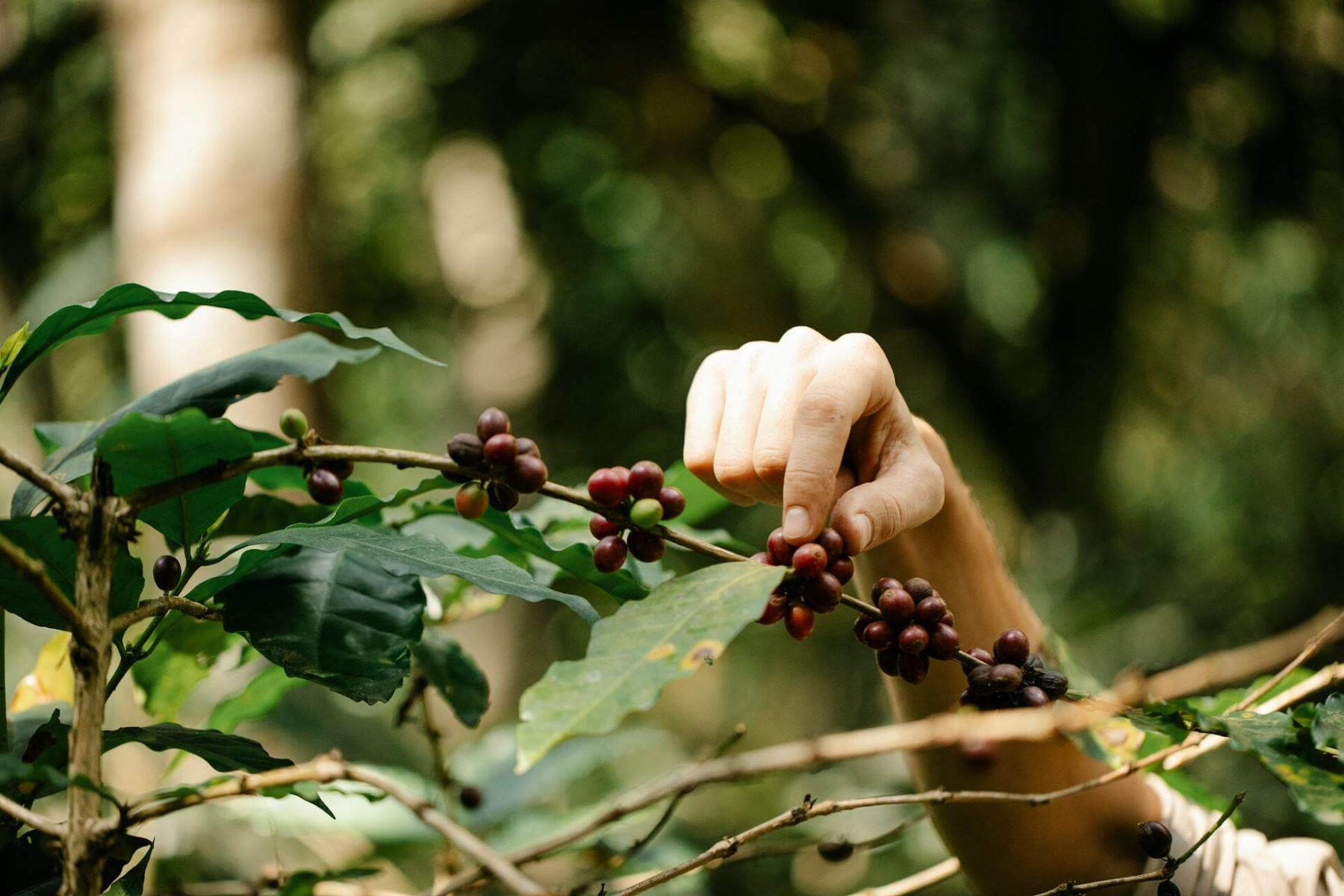
It is a common scientific practice to characterize plants and animals into a lineage of groups based on their mutual characteristics and differences. The shared characteristic of all the members of the Rubiaceae family is that all the plants are angiosperms or flowering plants. They produce fruits in berries, capsules, drupes, or schizocarp. This family accommodates the evergreen coffee and kratom plants that grow in tropical areas.
It has around 13000 species, all of which exhibit their characteristic active components or alkaloids. One common compound that the Rubiaceae family exhibits is quinine, which has antimalarial properties. This chemical comes from cinchona bark, one of the many popular species of the group. Thus, we presume healing and therapeutic properties are not uncommon features of the species of this family.
To make it clearer, kratom is very much related to cinchona bark, even more than coffee. Therefore, it is being paid more attention to for its healing properties. The kratom genus has only 10 species. On the other hand, coffee is a member of the genus that contains around 120 closely related species.
Kratom And Coffee: Similarities And Differences
Although both coffee and kratom thrive in warmer climates, they originated from different parts of the world. Nevertheless, kratom is still primarily produced in its indigenous habitats, while the coffee plant is abundantly grown everywhere globally. Both of them, though scientifically share the same botanical family, have different psychoactive profiles.
The Active Components
Does kratom have caffeine, or does coffee have similar alkaloids like kratom? Since both come from the same house, it is a commonly asked question. Coffee beans contain caffeine as the main alkaloid responsible for its stimulating effects. This active compound gives us in the morning a boost of energy we get with coffee. The other less important and concentrated alkaloids are theophylline and theobromine. Though showing a scientific relation, it does not produce the alkaloids particular to kratom.
On the other hand, kratom contains two important alkaloids - Mitragynine and 7-Hydroxymitragynine, along with 23 other less important ones. It does not contain caffeine, and all of its properties majorly come from the significant two. Though less significant, the other active alkaloids play a supportive role in developing kratom effects in your body.
Ways Of Consumption
Coffee is now one of the most popular beverages and is preferred that way. It is also used in food combinations for making coffee cakes, brownies, and other drinks. On the other hand, kratom is consumed in various forms, from tablets and capsules to direct intake of kratom leaves and kratom powder. Recently other means such as tinctures, powdered extracts, and food combinations are also gaining much popularity. Although there is no proof or research to back kratom's efficacy in the therapeutic setting, people still use it to relieve stress and get relaxed.
Potential Risks
While both kratom and coffee are generally considered safe when consumed in moderation, they can pose risks at high doses or in certain individuals. Kratom has been associated with potential side effects such as nausea, constipation, dizziness, and dependence, while excessive caffeine consumption from coffee can lead to insomnia, jitteriness, increased heart rate, and other adverse effects.
Can You Mix Coffee And Kratom?

So, is there caffeine in kratom? Kratom does not have caffeine, but when you mix kratom with coffee, you get to enjoy the benefits of both kratom alkaloids and caffeine. While mixing kratom with coffee can offer some positive effects, it's essential to proceed with caution and moderation due to the potential for increased stimulant effects. Both the kratom and coffee contain compounds that interact with the brain's receptors, particularly adenosine receptors, which can affect energy levels, mood, and focus.
Drinking coffee with kratom may amplify the stimulating effects of the two substances, potentially leading to increased alertness, energy, and focus. Some people find that mixing coffee with kratom provides an increased energy boost and enhances their productivity and mood, while others may experience jitters, anxiety, or other adverse reactions from the combination.
If you choose to mix coffee and kratom, it's essential to start with small kratom doses of each and monitor how your body reacts. Different individuals may have varying tolerance levels and sensitivities to these substances, so what works well for one person may not be suitable for another.
Additionally, keep in mind that both coffee and kratom can cause dehydration, so it's crucial to stay hydrated by drinking plenty of water throughout the day, especially if you consume them together.
How to Make Kratom Coffee?
The earthy taste of kratom goes very well with caffeine in coffee, and that's why many kratom and coffee enthusiasts like to make their favorite coffee drink enhanced with kratom.
Making kratom coffee involves combining kratom powder or crushed leaves with coffee grounds. So, how to effectively mix kratom with coffee? Here's a simple method to make kratom-infused coffee:
Ingredients:
- Kratom powder or crushed kratom leaves
- Ground coffee
- Water
- Optional: sweetener, milk, or creamer
Instructions:
- Measure out your desired dose of kratom powder or crushed leaves. Start with a small amount if you're new to kratom or unsure of your tolerance level. A typical starting dose is around 2 to 3 grams, but this can vary depending on individual factors.
- Brew your coffee using your preferred method. You can use a coffee maker, French press, pour-over, or any other brewing method you prefer. Make sure to brew enough coffee to your desired strength and volume.
- Once your coffee is brewed, let it cool slightly to a temperature that's comfortable for drinking. Extremely hot liquids can affect the potency of kratom alkaloids, so it's best to avoid boiling hot coffee.
- Stir the measured kratom powder or crushed leaves into the brewed coffee. Mix thoroughly until the kratom is evenly distributed throughout the coffee.
- If desired, add sweetener, milk, or creamer to taste. Some people find that adding milk or creamer can help mask the taste of kratom, which some find bitter or earthy.
- Enjoy your kratom-infused coffee slowly, sipping it over time. Pay attention to how your body responds to the combination of kratom and coffee, especially if you're new to combining kratom and caffeine.
The Bottom Line
Kratom and coffee, while both belonging to the same botanical family, exhibit notable differences in their active components, origins, and consumption methods. Despite originating from the Rubiaceae family and sharing some similarities, such as their ability to thrive in warm climates and the presence of psychoactive properties, they differ significantly in their alkaloid composition and effects.
Mixing kratom with coffee can yield a combination of their respective stimulating effects, potentially enhancing alertness, energy, and focus. However, it's crucial to approach this combination with caution, as individual responses may vary, and excessive consumption can lead to adverse effects such as jitteriness and insomnia.
Ultimately, whether enjoying kratom, coffee, or a coffee-kratom combination, it's crucial to keep moderation and awareness of your tolerance and sensitivity in mind. With responsible consumption, you can appreciate the unique properties of these botanicals while minimizing potential risks.
Are you ready to enjoy the benefits of taking kratom with coffee? Here at Authentic Kratom, you can buy high-quality kratom powder that is impurity-free, lab-tested, and produced, keeping our customers' needs in mind. Give it a shot, and you will love your experience with our premium-grade stuff!



